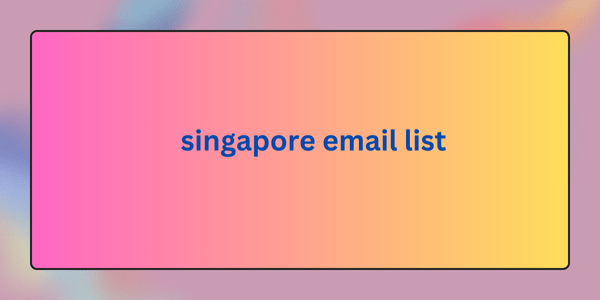For more than a decade, walled gardens have been a given for brands and advertisers : a large number of users willing to spend a good part of their online time there, high levels of personalization of the content offering and targeting of their audience , thanks to an in-depth knowledge of data, personal information and interests.
All this translated into the possibility of creating . Effective and high-performance advertising campaigns , so much so that on average the most significant budgets were invested on these channels, even for campaigns with conversion objectives.
But, in the last few years walled garden vs
The situation has changed. Walled gardens are progressively losing appeal in the face of an open web that is instead gaining ground, proving to be walled garden vs more reactive to the evolution of privacy regulations , technological progress and user expectations.
But let’s proceed in order and before we get singapore email list to understand the change underway, let’s start from the basics.
Walled Gardens: What are they
The term “walled gardens” refers to closed ecosystems in which data, content, and user interactions are confined within the platforms themselves.
Meta, Amazon, Google, TikTok: it is enough to refer to some big players attributable to this category to understand the characteristics of these systems.

Here the proprietary companies choose which information, services or products to show to users and all interactions take place within a controlled environment.
All this, as we anticipated, allows for a very precise and centralized collection of data : every click, viewing of a product, interaction with a content or an advertisement is tracked . providing a rich source of information on user behavior .
walled garden marketing walled garden vs
Thanks to all the data collected, it is possible to create detailed user profiles to be used for profiled target audiences to reach with targeted advertisements, thus increasing the effectiveness of your advertising campaigns.
It is therefore no coincidence that, as reported by how often should you clean your email list eMarketer. Meta and Google were the destination, in 2023, of over 60% of global advertising spending. Advanced
profiling through first-party data , but not only: let’s start with a significant fact to also introduce some less positive aspects that concern walled gardens.
This data is significant of
progressive disinterest of the public in the use and enjoyment of the same walled gardens . The reason is certainly attributable not only to a progressive loss of interest in the proposed contents, but also to the growing interest of users towards their own privacy .
One of the less transparent aspects of walled gardens is the management of data itself. Users have little control over proprietary data and how it is used: the walled garden vs process by which each company manages data
is, in fact, considered proprietary. Furthermore, most platforms only allow advertisers to see aggregate metrics, which leads to issues of transparency of the performance itself.
Open Web: The Ever More “Real” Alternative to Walled Gardens
The term “open web” refers to the internet ecosystem in which data and information are accessible without restriction. This includes websites, apps, digital properties .
The combination of free, quality ba leads content . Coupled with a growing focus on privacy by non-walled garden sites , is winning over more and more users, and consequently . Attracting the attention of brands and advertisers.
Accelerating the process are the the presence on the market of increasingly high-performance platforms , such as Blendee, which allow advanced. Profiling activities even in open environments thanks to:
identity resolution processes walled garden vs
processes for valorising first-party data on company properties;
data enrichment and data collaboration activities ;
contextual targeting and advertising.
walled garden open internet
Walled Garden vs Open Web: what future?
Brands and companies can no longer afford fragmented strategies and tactice. All activities must be able to work together efficiently, supported by technological . Create larger target audiences , even with the help of second and third-party data, in full respect of user privacy .

